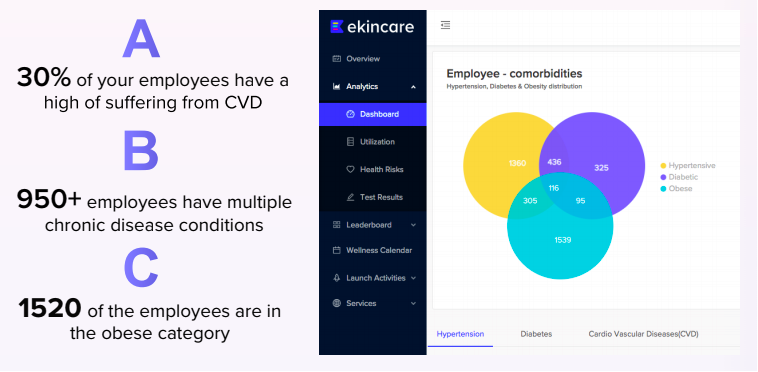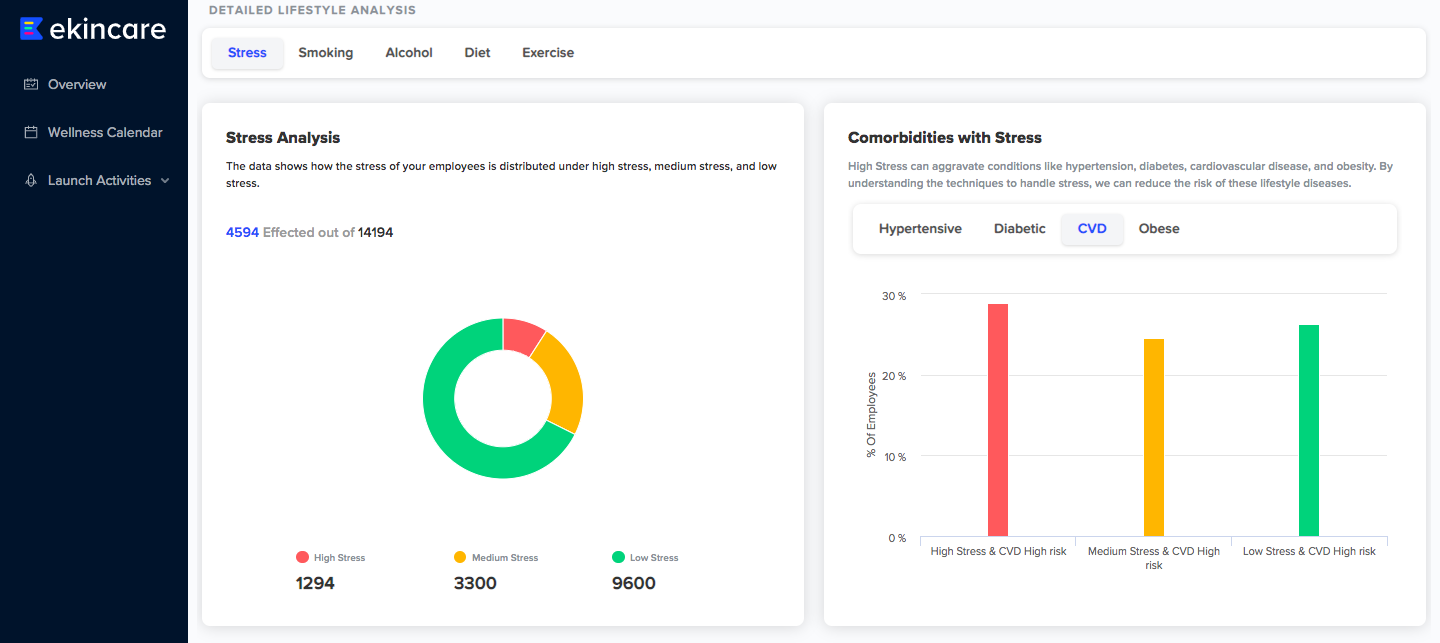An ROI driven employee wellbeing strategy for 2020

A growing number of companies have started placing a high priority on the wellbeing of their workers. But does investing in employee wellbeing actually lead to higher productivity and are there any tangible benefits to the business bottom line? Experimental evidence such as Oswald et al. (2015) suggests that the answer is yes, but until now companies haven't been completely able to utilize the benefits of its wellbeing programs.
Driving ROI and engagement is still among the top challenges for a successful wellbeing strategy. One of the leading factors behind the failure to achieve the ROI and engagement is the strategy based on external influence. A lot of employee health benefits programs are often limited by a lack of data to guide their design and measure outcomes. As a result, organizations end up offering health benefits that lack utilization.
However, getting useful data can be a real challenge these days considering the number of sources, various tracking and management systems, regulatory statutes governing multiple types of corporate wellness data, as well as reporting irregularities and the like.
Indeed, crafting out a good strategic plan can significantly enhance your request, acquisition, and analysis efforts. Do you have a strategy currently in place? If not, invest some time and effort in preparing a plan of action that specifies what you would like to do, what resources you would like to tap, steps for proceeding, and when.
For starters, here is a step by step approach to craft your data-driven wellbeing strategy that drives ROI:
Step 1: Evaluating current and potential health risks of the employees
The health risk assessment (HRA) serves as a great tool in evaluating the health risks. The assessment comprises of 26 questions related to Gender, Age, BMI, hypertension treatment, systolic blood pressure, smoking & Alcohol status, etc. Post the HRA, only the relevant tests are suggested to an individual, thereby reducing healthcare costs to a considerable extent.
Post the HRA and Health Checks, the dashboard shown here gives you a detailed analysis of employees' health which can be further segmented into location, department, etc. This data can be consulted with a health expert, and a comprehensive plan can be created for the year to improve the health of the employees.
 Source: ekincare
Source: ekincare
Step 2: Determine a plan of action with the help of a Healthcare Consultant
 Source: ekincare
Source: ekincare
Based on the above data, we can see that there is a high amount of obesity and other chronic conditions among the workforce, so the below initiatives can be taken to get employees to adopt a healthier lifestyle.
- Make a Health coach available to employees with a chronic disease condition.
- Plan and track stepathons contests, which are proven to be good in making employees adopt a healthier lifestyle.
- Create a wellness calendar for the year, which includes initiatives such as health talks, Zumba sessions, laughter therapy etc. as shown below:
Step 3: Measure the effectiveness of your healthcare initiatives
Utilization is one of the critical metrics for the HR function concerning any healthcare initiative taken. At ekincare, we provide a dashboard to closely track the utilization of the health benefits that your company offers.
Furthermore, you have the option to slice and dice the data to drill down to location, department, and the gender-wise breakup of the utilization.
Steps that can be taken:
- Monitor the health benefits utilization in real-time.
- Encourage employees to take benefit of the services offered by tailored communication.
- Have a complete control on the health challenges initiated
- Stepathon is a proven form of challenge to help improve engagement among employees and encourage them to walk more on a day-to-day basis. One of the primary challenges of conducting a stepathon is to keep track of people participating and incentivizing them.
- Use technology that provides a comprehensive view of health benefits utilization rates, health checks, app usage, challenges undertaken, etc. This enables the HR function to seamlessly prepare reports to measure the outcomes and improve upon it on a day-to-day basis.
Want to take your corporate wellbeing program to next level? Follow #PledgeForHealth, an initiative by People Matters and ekincare to become a part of a campaign that contends for an impactful corporate wellbeing for each employee.







